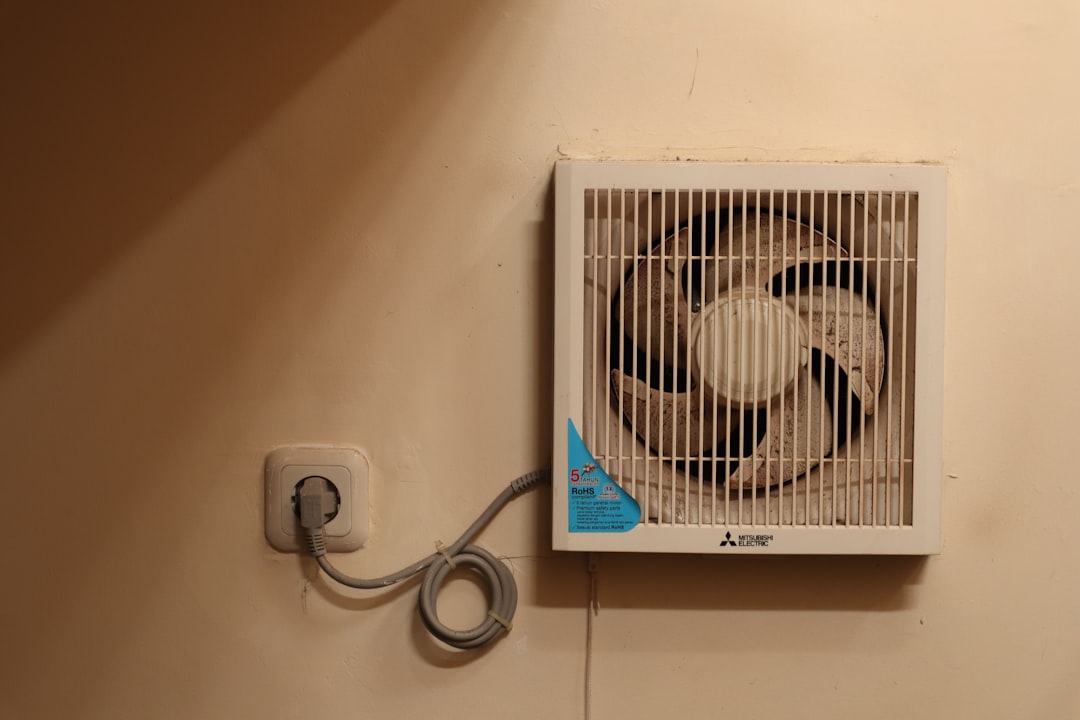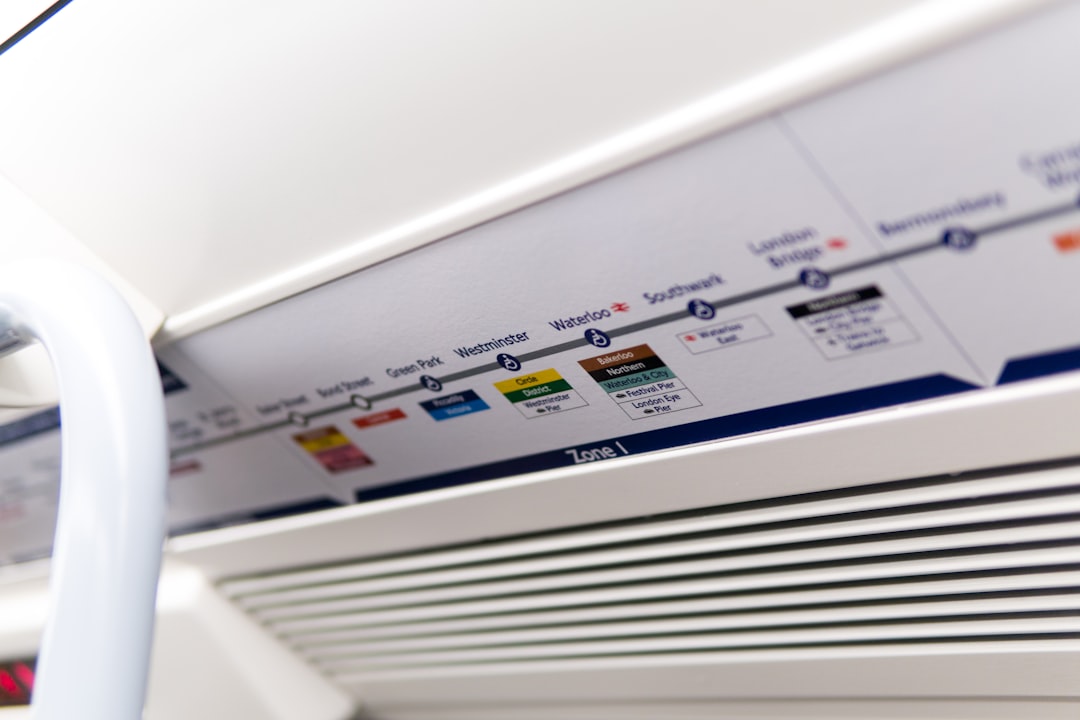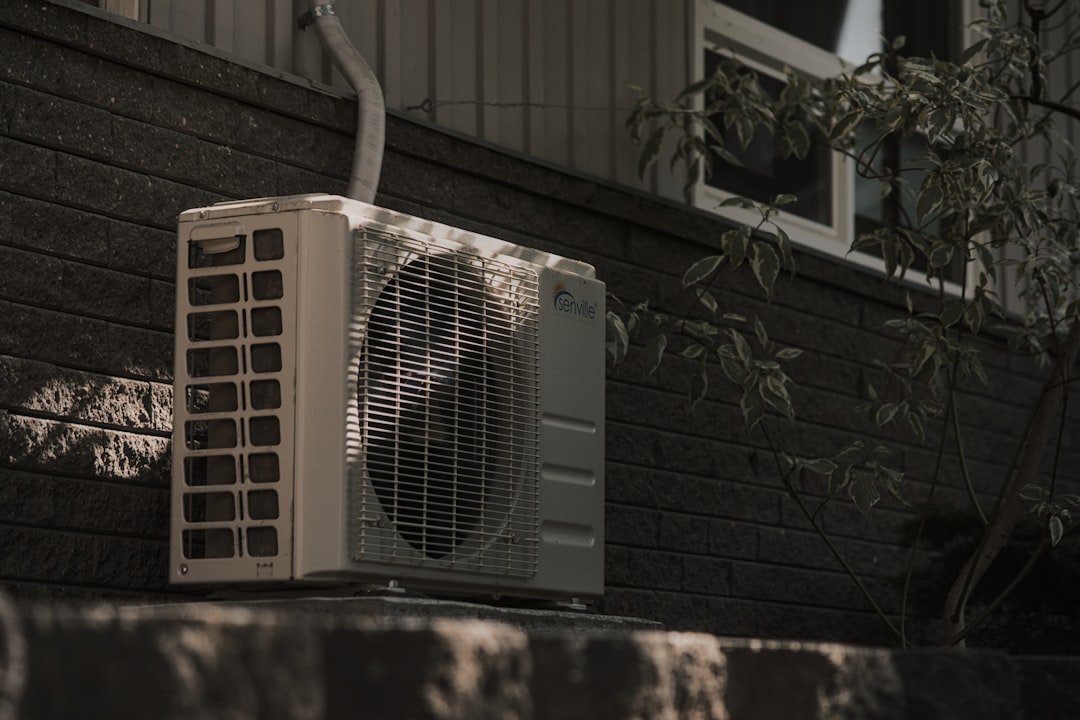

Engage prospects with a scan and streamline customer engagement with FREE QR code marketing tools by Sona – no strings attached!
Create a Free QR CodeFree consultation

No commitment

Engage prospects with a scan and streamline customer engagement with FREE QR code marketing tools by Sona – no strings attached!
Create a Free QR CodeFree consultation

No commitment
QR codes have become an essential tool for air conditioning repair services, bridging the gap between onsite service and digital engagement. Many HVAC providers struggle to capture high-value prospects or accurately track every customer touchpoint, leading to missed opportunities and unaddressed service needs. Integrating QR codes into daily operations enables repair teams to transform every interaction—from technician visits to printed maintenance reminders—into channels for seamless communication, richer feedback, and timely issue resolution.
Customers often experience frustration due to slow responses or complicated appointment scheduling, especially during peak seasons or after hours. QR codes simplify access to troubleshooting guides, service booking, and emergency repair requests, reducing friction and eliminating the delays of traditional forms or call centers. For both technicians and managers, this digital shift lessens the administrative load and yields more actionable data while increasing visibility into which touchpoints yield the best results.
When used as part of a modern service strategy, QR codes empower air conditioning repair businesses to offer quicker responses, improve the customer experience, and collect valuable insights. This creates a competitive advantage in a market where every missed lead or delayed follow-up can affect both reputation and revenue. This guide covers proven methods to leverage QR codes for accelerating success in air conditioning repair, maintenance, and installation services.

Air conditioning repair businesses often face challenges such as lost leads caused by incomplete paperwork, delays from manual workflows, and missed upsell opportunities from not capturing feedback at the point of service. QR codes solve these issues by connecting physical customer touchpoints like onsite visits, equipment stickers, or invoices with immediate digital actions such as booking confirmations, warranty validation, and satisfaction surveys. By connecting the dots between offline and online journeys, you can reduce friction, automate routine interactions, and make every engagement measurable.
Replacing analog processes with QR-enabled flows delivers faster response times and higher conversion rates. Paper brochures give way to scan-to-book experiences, technician clipboards become mobile forms with prefilled job data, and phone trees are replaced with QR text messages support. Define your objectives up front, then deploy QR codes at the most frequented touchpoints to shrink resolution times and improve customer satisfaction.
Rapid digital adoption within HVAC has highlighted gaps where leads slip through, valuable intent is missed, and the impact of traditional marketing is hard to measure. Customers encounter your brand through yard signs, fleet vehicles, direct mail, and service invoices, yet without a quick digital pathway their interest often fades. QR codes create that instant bridge to action, enabling bookings, support requests, and reviews with a single scan. See Sona QR’s HVAC guide.
These codes also let you maintain agility in a seasonal business. Promotions change, emergency schedules evolve, and service areas shift. Dynamic QR codes—with tools like the Sona QR generator—give you the flexibility to update landing pages without reprinting stickers, door hangers, or brochures. The combination of speed, measurability, and low cost makes QR a practical standard for modern HVAC operations.
Integrating QR codes into the customer journey addresses low feedback rates, unclear campaign performance, and missed segmentation. You gain a measurable, adaptive connection between offline and online engagement that directly supports service excellence and revenue growth.

Air conditioning repair businesses need a range of QR formats to support different workflows and touchpoints. From empowering technicians in the field to simplifying customer actions at home, the right format matched to the right destination determines how successfully you move scanners to outcomes.
Static and dynamic codes both have a place. Static codes are best for compliance or unchanging content, such as safety instructions on equipment. Dynamic codes allow you to edit destinations, run A/B tests, capture analytics, and power retargeting without reprinting.
Dynamic QR codes suit campaigns that need frequent updating or deeper analytics, like seasonal promotions or satisfaction surveys. Static codes are ideal for permanent references like safety notices and basic troubleshooting diagrams.

Growth in air conditioning repair depends on turning anonymous, offline encounters into trackable leads and measurable follow-ups. The most effective strategy is to place QR codes where engagement already happens. Identify your highest-traffic surfaces and moments, then align each placement with a single, clear call to action.
Think beyond basic placements. Building managers, HOA boards, and landlords often influence repair decisions. Create QR-enabled materials that speak to these decision makers at the moment they feel a need, then funnel them into the correct workflow for quoting, maintenance agreements, or emergency dispatch.
Strategic placement turns every physical interaction into part of a measurable sales and service pipeline. Over time you will discover which assets consistently generate bookings and which should be updated or repurposed. Explore Sona QR’s use case library for placement ideas.

QR codes support practical outcomes across the full lifecycle, from diagnosis to post-service engagement. When matched to the right destinations, each use case reduces friction for customers and increases efficiency for your team.
Prioritize use cases that solve known bottlenecks such as long phone hold times, low survey response rates, and difficulty capturing context about equipment at the point of service. Start with three to five use cases, then scale once you prove lift in conversion or satisfaction.
Many HVAC businesses struggle to segment leads or retarget site visitors because offline interactions are hard to attribute. QR scans capture context, such as location, time, and asset, which becomes a powerful signal for intent. By deploying unique codes across multiple touchpoints, you can automatically build segmented lists that power targeted follow-ups.
Differentiate your segments by urgency and customer type. Homeowners scanning emergency numbers at 10 p.m. need immediate service and reassurance. Property managers or facility directors scanning equipment labels during business hours likely want detailed quotes, maintenance schedules, or compliance documentation. These nuances guide your automation and human outreach. See Intent-Driven Retargeting for targeting ideas.
These techniques eliminate guesswork by letting each scan contribute to a clearer customer profile. Your marketers and dispatchers can then prioritize high-intent leads quickly, lift conversion, and reduce time to revenue.
Coordinating messaging across print, digital, and in-person efforts can be a challenge. QR codes unify campaigns by creating a direct path from offline materials to digital experiences that are measurable and consistent. The more cohesive the journey, the more likely customers are to complete high-value actions.
For air conditioning repair services, the most effective channels often include direct mail, van wraps, door hangers, yard signs, and printed estimates. Pair each placement with a dedicated QR code and a purpose-built destination, such as an after-hours scheduler or a no-obligation estimate request.
By centralizing QR management with a platform like Sona QR, you can monitor performance across all channels and switch destinations as offers change, keeping your teams aligned on what is working.
Launching a QR program does not require a complete overhaul. Start small with a high-impact use case, validate results, and iterate. Clear goals and disciplined testing will help you scale confidently across vehicles, printed materials, and onsite assets.
Use the steps below to move from idea to measurable outcomes. Each step includes HVAC-specific tips for faster impact and stronger adoption by technicians and customers alike.
Identify the key business challenge, such as booking delays during heat waves, low survey response rates after service calls, or untracked site visits from fleet vehicles. Match the QR deployment to that need, for example scan-to-book for emergency requests or scan-to-review for post-service follow-ups.
Define a single call to action and align it with a measurable outcome. If the goal is to reduce call volume by 20 percent after hours, link scans to a mobile-first scheduler with instant technician availability or a guaranteed call-back window.
Select static codes for fixed information like safety instructions or permanent troubleshooting charts. Choose dynamic QR codes for campaigns that need analytics, A/B testing, or frequent content changes, such as seasonal offers and maintenance plan promotions.
If you plan to segment by location, channel, or time, use dynamic codes generated through Sona QR. Dynamic codes support retargeting, editable destinations, and device-level insights that static codes cannot provide.
Design codes that stand out and explain the benefit clearly. Add a short, benefit-driven CTA near the code, such as Scan to book a same-day repair, Scan for a 10 percent tune-up discount, or Scan for filter replacement tips.
Test scannability on various surfaces and in different lighting conditions. Validate performance on curved condenser housings, vehicle wraps viewed at a distance, and thermal labels exposed to heat. Confirm that landing pages load fast and look great on mobile devices.
Start with high-frequency touchpoints like equipment stickers, technician leave-behinds, and service vehicles. Expand to direct mailers, yard signs, jobsite signage, and lobby or storefront displays once you verify ROI.
Coordinate with operations and marketing to ensure consistent messaging across placements. Use unique dynamic QR variants per channel and location to monitor performance and double down on the best producers.
Monitor scans by channel, asset, and time of day. Measure conversion behavior, such as completed bookings, survey submissions, or plan enrollments. Identify drop-off points and test alternative CTAs or landing pages.
Use Sona QR to integrate scan activity with your CRM, route urgent requests to dispatch in real time, and attribute downstream revenue through Sona. Regular optimization cycles will compound results and justify broader rollouts.
Without analytics, air conditioning repair businesses miss the link between offline touchpoints and revenue. QR code platforms provide actionable measurement, tying scans to outcomes like appointments booked, memberships sold, or reviews posted. For measurement frameworks, see offline attribution. By analyzing placement performance, you can reallocate budget to the assets and channels that produce the best results.
Treat each QR scan as the top of a micro-funnel. Attribute the scan to a specific asset, capture the user’s action, and then link that action to a revenue event. Over time, these insights inform inventory planning, staffing, and seasonal promotions that maximize profit and reduce wasted effort.
Sona QR captures detailed scan data like time, device, location, and source. When paired with Sona.com, you can connect anonymous scans to known contacts through identity resolution, unify QR activity with website visits and ad clicks, and build a comprehensive view of pipeline influence across buying stages. Learn more in Account Identification.
Once your first campaigns are live, small refinements will deliver outsized gains. Focus on clarity of the call to action, scannability in real-world conditions, and automation that turns intent into action without human delay. The combination of technical reliability and customer-friendly messaging drives repeatable performance. For ideas, check top QR integrations.
Creativity in placement also pays dividends. Filter replacement stickers linked to subscription supplies, thermostat cards with scan-to-schedule seasonal tune-ups, and magnetic QR badges for property managers can each unlock new streams of demand and retention.

HVAC companies are finding practical ways to use QR codes that cut costs, improve response times, and fuel referrals. These examples illustrate how small changes at key touchpoints deliver measurable outcomes. Use them as starting points and tailor them to your service model and customer base.
The most successful deployments pair a focused use case with a clean landing experience. Short forms, prefilled fields, and mobile-first design make a significant difference in conversion. Adding trust elements like technician bios, licenses, and reviews near the form can further increase completion rates.
Like any customer-facing technology, the details determine success. Good design, clear instructions, and landing pages that match intent will raise engagement. Ensure your team understands how QR codes fit into daily workflows so adoption becomes second nature.
Avoid placements and formats that cause scanning difficulty or confusion. Curved surfaces, glare, tiny codes, and vague CTAs lead to frustration. Test, iterate, and share wins internally to build momentum across your crews.
QR codes are more than just a modern convenience for air conditioning repair services. They solve key industry problems, such as lost leads, disconnected messaging, and poor data visibility, by making each customer interaction trackable, measurable, and actionable. When thoughtfully deployed across vehicles, equipment, and printed materials, QR codes convert casual interest into booked appointments and turn one-time visits into long-term relationships.
For operations and marketing teams, the advantage is twofold. You reduce administrative burden by automating routine actions and gain clear attribution that links offline engagement to revenue. These insights allow leaders to forecast demand, allocate technicians more effectively, and invest in the channels that truly perform. Read more on revenue attribution.
Integrating QR codes into air conditioning repair service workflows directly addresses pressing industry challenges, from losing high-value leads to lacking critical engagement data for strategic decisions. With Sona QR, you can generate, manage, and track your codes in minutes, then use Sona.com to connect scans to pipeline and revenue. Start creating QR codes for free.
QR codes have revolutionized air conditioning repair services by transforming how technicians access critical information and engage with customers. From instant access to repair histories and troubleshooting guides to seamless scheduling and follow-ups, QR codes enhance technician efficiency and elevate the overall customer experience. Imagine a technician arriving fully prepared with the exact details needed to fix a unit quickly, while customers enjoy faster, more transparent service.
With Sona QR, you can create dynamic, trackable QR codes tailored for repair workflows—update information instantly without reprinting, monitor scan activity, and link every interaction to improved service outcomes. This technology not only streamlines operations but also supports customer acquisition by showcasing professionalism and reliability.
Start for free with Sona QR today and empower your air conditioning repair team with smarter tools that turn every scan into faster fixes and happier customers.
Look for services that integrate QR codes for easy booking, quick troubleshooting, and real-time communication, which improve response times and customer experience.
Signs include repeated breakdowns, slow cooling, unusual noises, and the need for emergency service requests, which can be facilitated through QR code-enabled support.
The article does not provide specific repair costs but suggests using QR codes on invoices and estimates to get accurate, timely pricing and service details.
Services using QR codes on vehicles, equipment stickers, and local marketing materials enable quick access to booking and emergency requests, helping you find nearby reliable providers.
Enroll in maintenance plans and use QR codes on filter reminders or thermostats to schedule regular tune-ups and receive timely service alerts.
QR codes provide faster service, improved customer experience, easy access to troubleshooting, automated workflows, and measurable insights to optimize operations.
They simplify appointment booking, offer instant troubleshooting guides, enable feedback collection, and reduce delays caused by traditional call centers.
Static QR codes are used for fixed information like safety instructions, while dynamic QR codes support campaigns needing updates, analytics, and retargeting.
Place QR codes on service vehicles, equipment stickers, invoices, direct mail, jobsite signage, and printed materials to capture leads and improve follow-up.
They use scan analytics to measure scans by channel and asset, monitor conversion behavior, integrate data with CRMs, and attribute revenue to specific campaigns.
QR codes on fleet vans and mailers provide direct links to emergency service requests, enabling faster triage and improved after-hours response.
Identify a key use case, choose the appropriate QR type, design and test codes, deploy across channels, and track and optimize performance.
Technicians use QR codes to access mobile forms with prefilled job data, join Wi-Fi for smart device setup, and provide customers with immediate support links.
Yes, placing QR code links to surveys and review sites on invoices or business cards encourages immediate feedback and improves referral rates.
Avoid placing QR codes on curved or poorly lit surfaces, use clear calls to action, ensure easy scanning, and provide trustworthy landing pages.
Use Sona QR's trackable codes to improve customer acquisition and engagement today.
Create Your FREE Trackable QR Code in SecondsJoin results-focused teams combining Sona Platform automation with advanced Google Ads strategies to scale lead generation

Connect your existing CRM

Free Account Enrichment

No setup fees
No commitment required

Free consultation

Get a custom Google Ads roadmap for your business






Launch campaigns that generate qualified leads in 30 days or less.
